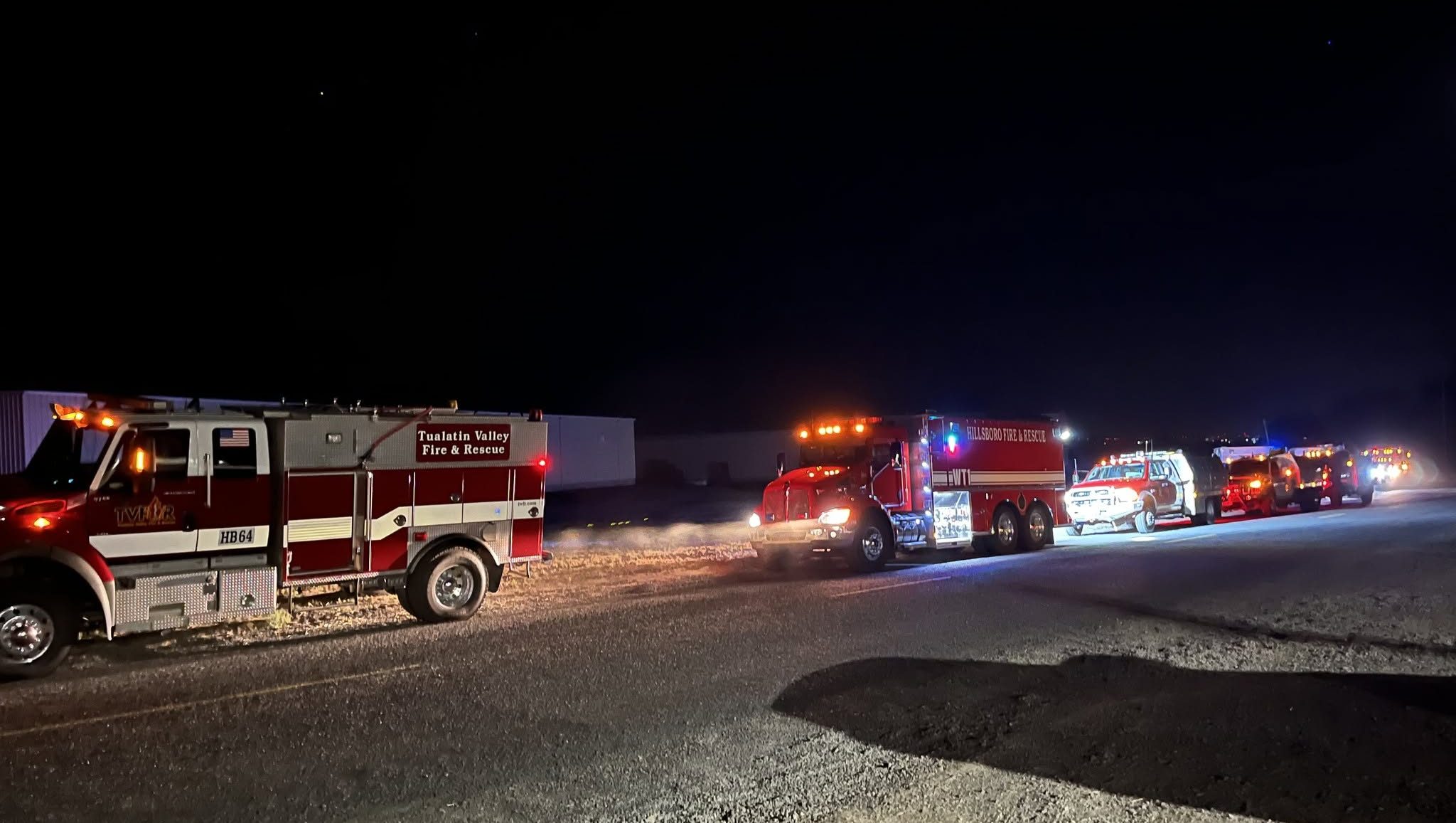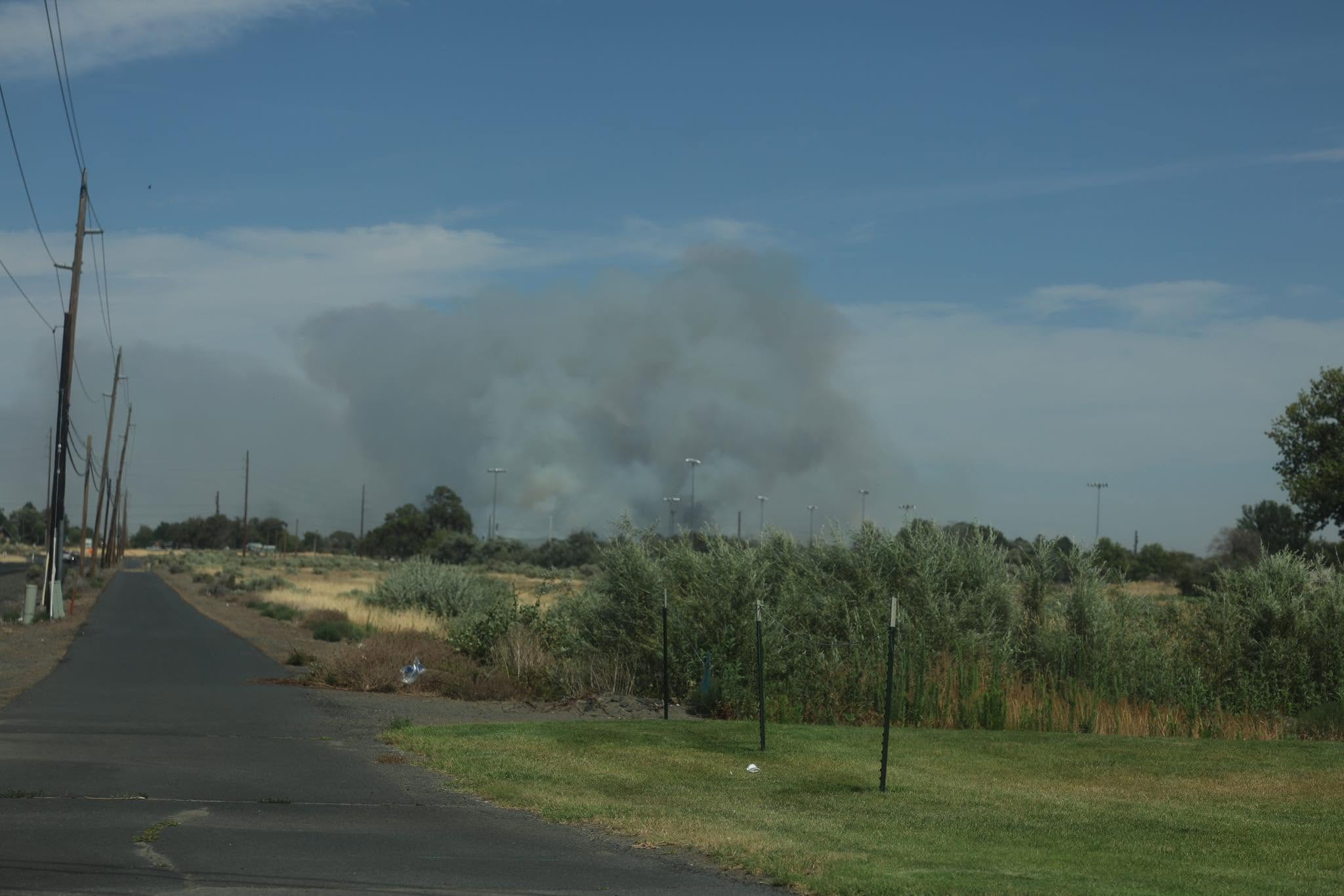Facing the wrath of fire season
Published 6:00 am Thursday, July 13, 2023

- The Hat Rock Fire burns in June 2023 near Hermiston. The wildfire started June 13 and grew to almost 17,000 acres before fire crews had the burn 100% contained on June 17.
PENDLETON — The entire state of Oregon was officially in fire season as of July 1.
“This means that fire restrictions and danger levels may be in place where you live or at a destination you plan on recreating to reduce the risk of human-caused wildfires,” the Oregon Department of Forestry announced.
The higher levels of fire restrictions and danger levels protect 16 million acres of private, county, state and federal land, the agency said.
Lindsay Olivera is the Oregon Department of Forestry’s wildland fire supervisor for the Pendleton Unit.
“It has been a busier than usual June and early July,” she said. And while the land may look green, “it is ready to burn.”
Most districts enter fire season in May or June and come out at the end of the season in October. In 2023, the Southwest Oregon district was the first to declare fire season on June 1. The North Cascade District was the last to declare on July 1.
There was recently a 42-acre fire near Ukiah. She said a fire that large, that far south is typically not seen this time of year. Usually, around this time of year, that far south, there are only fires that burn about a 10th of an acre to 1 acre.
“The dry fuels we are seeing now are definitely more like what we would see three to four weeks from now,” Olivera said. That shows how dry things are compared to years past.
While there was a good snowpack this year, she said, “Our thousand-hour fuels, our larger fuels, are a lot drier going into the season, and they are wanting to burn. And, yes, even though we have some green, we have older fuels, drought fuels, fuels that have been dry for several years, building up underneath that are really carrying the fires a lot more.”
Cooperation mattersJustin Lauer is the unit forester of the Oregon Department of Forestry for the Pendleton Unit. He said there was a slow start to the fire season but the region is in high fire danger. Weather, energy release component and fuel conditions — dead versus alive fuels and how hot and dry it is — determine the fire danger metric.
Lauer said the department is fully staffed and trained.
“We have super dedicated people here with strong work ethic,” he said. “It’s hot. It’s dirty. It’s long hours. It’s sleeping in the dirt. It’s eating smoke. It is very hard work, but we are ready to do our job.”
Lauer also highlighted the “breadth and depth” of cooperation to fight fires in Northeastern Oregon between the Oregon Department of Forestry, the U.S. Forest Service, the Bureau of Indian Affairs’ firefighting divisions and local fire departments is strong — and that is not necessarily always the case.
Other parts of the state struggle with collaboration. Lauer attributed the excellent cooperation of northeast Oregon to the sheer number of fires the region experiences, and so everyone has had to work together a lot.
Practice has hardened protocol, and the protocol is “closest force.” It does not matter whose land it is, the closest force is notified first and then eventually everyone responds. And whoever is on scene first, takes command, Lauer said, limiting confusion between agencies, and everyone knows everyone else’s goals and procedures.
“And we could not do our work without our partners,” he said.
Be aware and readyLauer said he wants the general public to being aware and up-to-date on the risk and danger of fire. He encouraged people to regularly check the Blue Mountain Interagency Dispatch Center’s website at bmidc.org.
“This is a one-stop shop,” he said, “for fire danger and restrictions and closures in our region.”
Olivera explained restrictions can include campfires, mowing, chainsaws, all-terrain vehicles and more. She recommended people visit the Oregon Department of Forestry website — oregon.gov/odf — to learn more about fire season, prevention and resources.
Defensible space is one thing in particular Olivera emphasized. Defensible space refers to creating a buffer between your home and what surrounds your home. It is about reducing and eliminating options for a fire to start or spread near your residence.
If it does come down to evacuation though, Olivera said, if there is time, gather important documents and essentials and go. If you have a sprinkler system, set it and go. If there isn’t any time, just leave. Get away from the fire and smoke.
We can only recreate and enjoy the land, Lauer said, if we are able to protect and take care of it.
“We want people to be out recreating and enjoying the mountains, the woods, the land,” he said, “but we also want people to be mindful that it is fire season. The last thing we need is a human-fire. Those are the ones that really take off on us.”
Know what to reportOlivera said if people are at a fire and cannot easily put it out, call 911 immediately. If they don’t have cellphone service, they should get to where there is service as soon as possible.
Location details are the most important to provide dispatch, Olivera said. The more dispatch knows about the fire’s location, the quicker an agency can arrive to assess, control, contain and extinguish the fire.
After calling 911, it is best to remain in a location that is safe and that has service, in case an agency calls you back to obtain more information.
Also, if it is safe and you are able to, Olivera said, it would be beneficial to stay on site with the fire and keep trying to control, contain and extinguish it until fire services arrive.
Olivera and Lauer emphasized the best line of defense is public awareness and education.
Lauer said given the good snowpack and a long winter, his concern is there “might be a bit of a lax attitude on paying attention to what is going on.” But conditions are “drier than we think it is,” he said.
Olivera said people need to avoid unsafe behavior because they think the fire risk is low when it really isn’t.
Community outreach is at the forefront of Olivera’s mind. She said the ODF Pendleton Unit and the Pendleton Fire Department plan on partnering up for various upcoming community events, such as the Pendleton Farmers Market, to promote awareness and provide information.
She also she hopes to expand this type of collaboration beyond the city of Pendleton and work with several regional communities moving forward.
If anyone has questions or concerns about wildfire, the Oregon Department of Forestry Pendleton Unit is here to provide answers. The office phone number is 541-276-3491.
The Oregon Department of Forestry is taking applications for a grant program it administers for which the Legislature has set aside $10 million in funding for 2023-25. Projects must show how they will reduce the risk of wildfires.
“The Landscape Resiliency Program grants are for large projects and emphasize collaboration and mitigation of wildfire risk,” said Jenna Trentadue, ODF’s state initiatives grant coordinator. “The minimum award is $300,000, so we highly encourage joint projects to treat large areas.”
Earlier grants went to projects such as the Ashland Forest all-lands restoration and the Upper John Day Valley landscape resiliency project.









